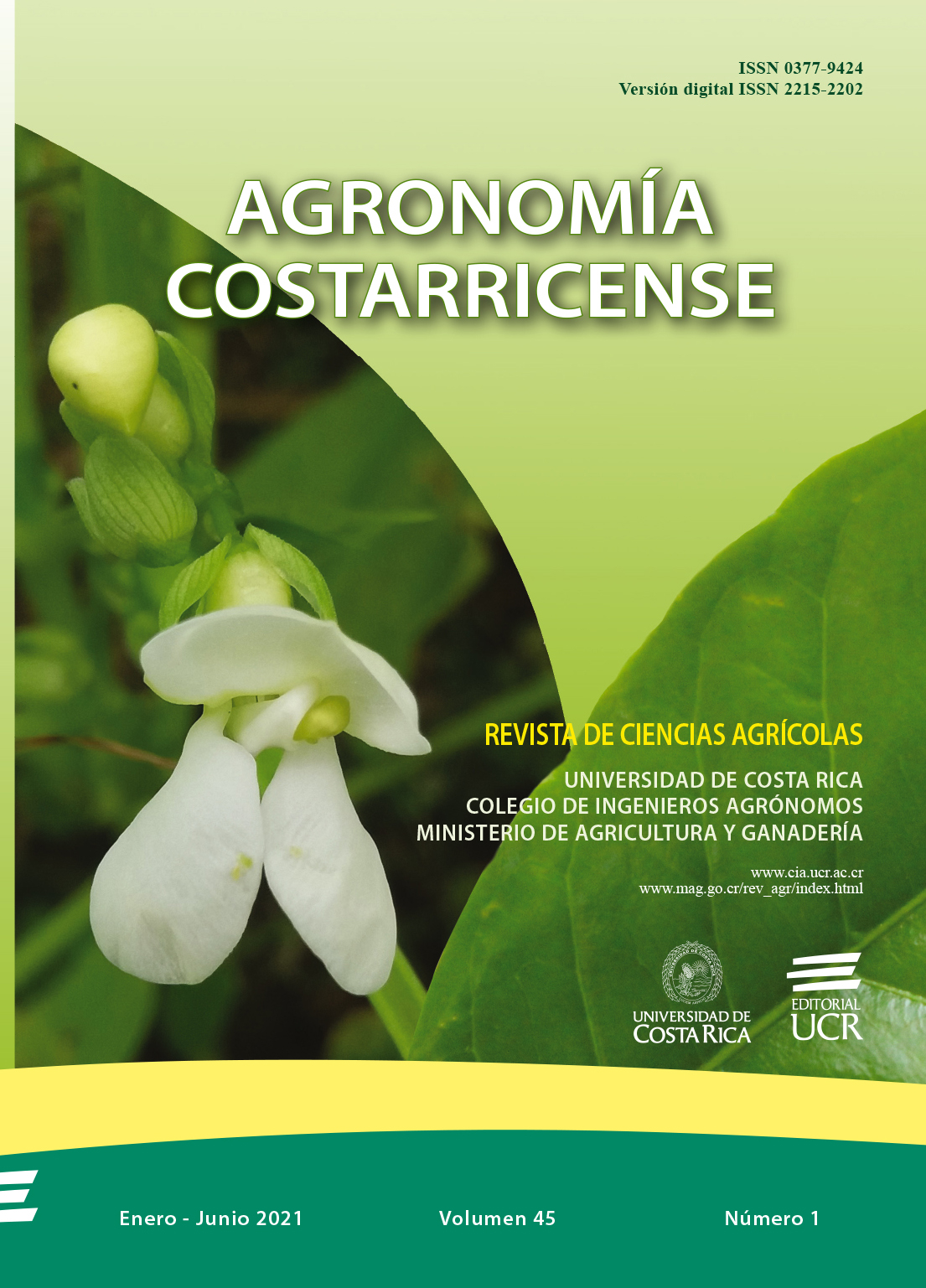Abstract
Introduction. Pineapple fruits offered at final markets show poor external color development, due in part because chlorophyll degrades very slowly during cold storage. Objective. To evaluate the effect of the conditioning temperature prior to transport simulation and subsequent storage on the development of yellow color in the epidermis of pineapple fruits cv. Golden Extra Sweet. Materials and methods. Pineapple fruits were exposed to 7.5°C, 10.0°C, 12.5°C, 15.0°C, 17.5°C and 20.0°C for 48 hours and then stored for 21 days at 7.5°C. Its effect on color index ((1000*a)/(L*b)), respiratory rate, ethylene production, weight loss, development of molds on the peduncle and internal fruit quality (firmness, soluble solids, titratable acidity and translucency) was determined. Results. Pineapple exposed to different acclimatization temperatures before storage showed a linear increase on color index of the peel, both at the end of the 48 hours and at the end of the 21 days at 7.5°C. Respiratory rate showed an exponential increase with increasing temperatures, and there was no evidence of their effect on ethylene production. Weight loss and mold development on the peduncle increased with increasing acclimatization temperatures for 48 hours. Internal quality was not affected by evaluated temperatures prior to cold storage. Conclusions. Keeping pineapple fruits for 48 hours at temperatures between 15.0 and 20.0°C prior to storage at 7.5°C, increased peel color index without affecting its internal quality. However, exposure of the fruit at temperatures above 15°C increased the incidence and severity on molds.


